Picassiette Dresser was seen at a brocante a few years ago.
"The name comes from the French Pique-Assiette, meaning “one who eats from others’ plates, or one who steals other plates”. This is a very loosely used translation of the French words. face Pique Assiette is a style of mosaic that incorporates pieces of broken ceramics—plates, dishes, cups, tiles — and other found objects into the design. The appeal and expressiveness of pique assiette lie in the ideas of lateral thinking, humor, recycling, and the significance of the found objects."
"This form of art is believed to have been originally introduced by Raymond Edouard Isadore, known as the “father of French pique assiette”. He discovered his bits of colored glass and pottery in the fields surrounding his house in Chartres, outside of Paris, and spent his life covering every surface of the inside and outside of the house and his garden area. He supplemented his shards with stuff from auctions, quarries, and the public dump. His home is a popular tourist attraction and is known as “Maison Picassiette” between 1938 and 1964. The monument he left behind is a house and garden covered with intricate mosaics of broken crockery, painting, and sculpture. Much has been written to try to explain why Raymonde Isidore, a middle-aged manual worker, produced such a beautiful, complicated, inspirational, and mystifying environment from the house he had built for his family. Perhaps what is amazing is not just that he chose to devote himself to his project, but that he achieved so much. The scale and richness are awe-inspiring.
In France La Maison Picassiette is set back from a modern urban street not far from the center of Chartres (50 miles – southwest of Paris). You reach it by walking down a narrow footpath. A small ticket booth and traditional French toilets have been added outside the front courtyard of the house. 30,000 visitors a year come to this place of wonder. The house is very modest in size, and is long and thin in shape, matching the dimensions of the plot it stands on. The doors and windows are all on the right-hand side, facing south. All the rage in the 1920s." Via Monika of Myeropeantouch
These are photos of the dresser that I saw at the brocante…
I should have bought it simply because it was a one of a kind piece,
beautiful in its off-beat way and
a touchable storybook for Gabriel.
The battle of want and need is constant.
Cost, space, and practicality (such a mean little word for creativity) usually set my course.
Hence, the reason to sell is handy for my hobby.
But as you know if I bought everything that ever caught my eye
I would be eating dirt and leaves, and living outside as my home would be full.
God, if only I didn't have the brocante bug how easy housecleaning would be, and the urge to
want it all would be far from my thoughts.
Ah such trivial thoughts to play with on my blog and I need trivial thoughts these days.
Look how the grout it made to look like a vine twisting and connecting the pieces.
This dresser was not recently made. The collection of broken dishes is impressive!
The drawer pull is a small curtain ring from the 1900s.
Most of the broken plate pieces are from the 1860s to the turn of the century.
This piece makes me
think how we are all connected
in our brokenness
held together by
leaning into the
strong vine of trust and forgiveness.
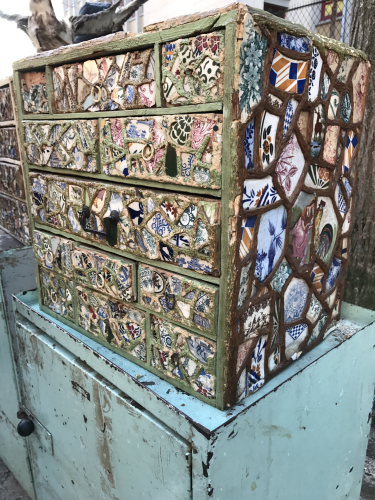
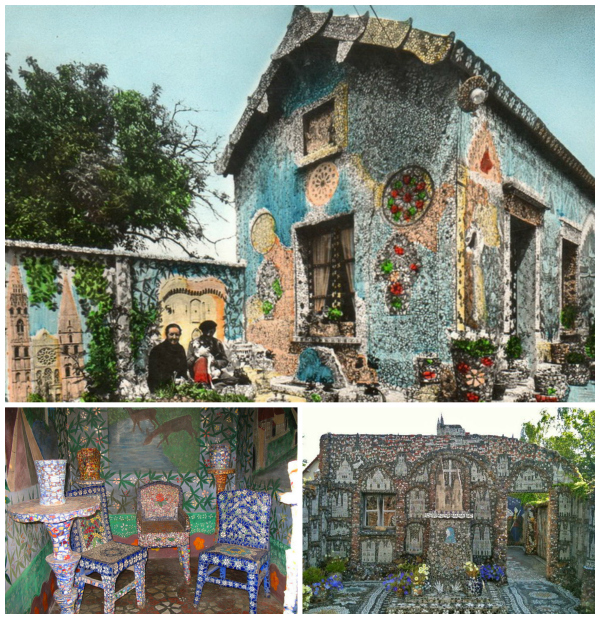
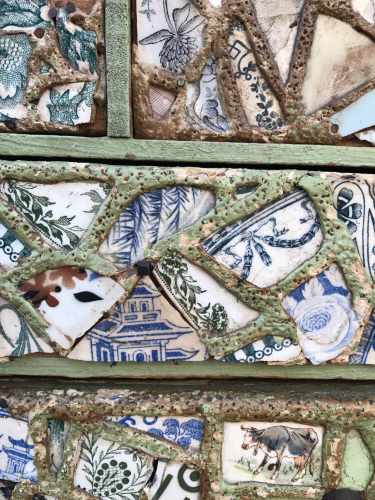
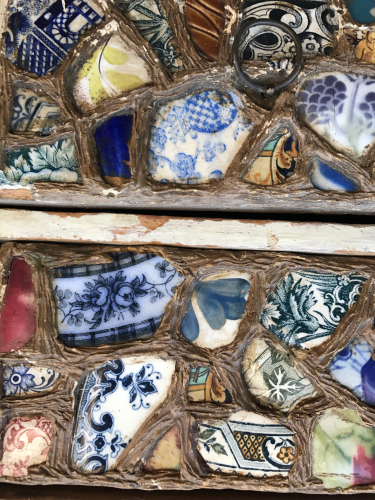
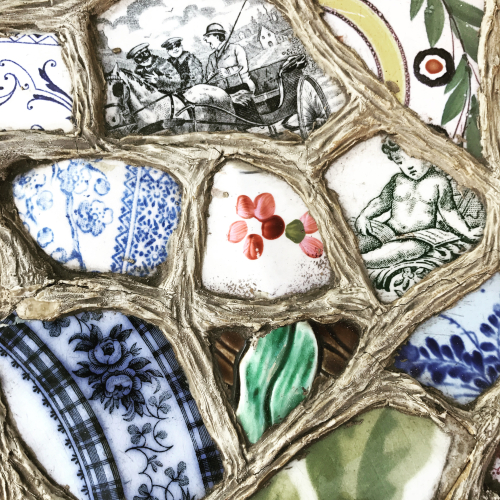

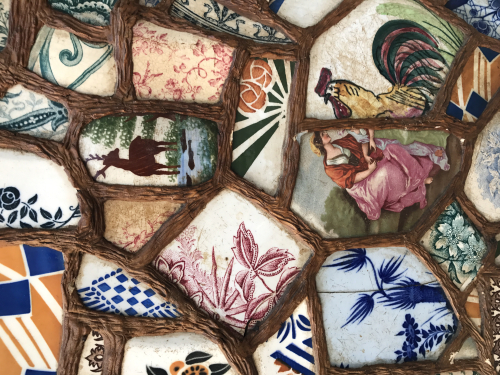
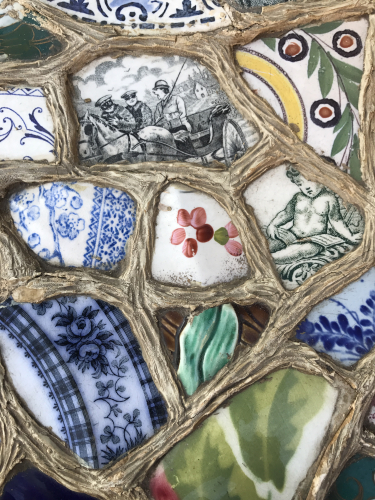


Leave a Reply